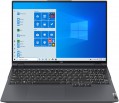Screen resolution
The resolution of the screen installed in the laptop — that is, the size of the screen in pixels horizontally and vertically.
Higher resolution, on the one hand, gives a sharper, more detailed image; on the other hand, it increases the cost of the laptop. The latter is connected not only with the cost of the displays themselves, but also with the fact that in order to work effectively at high resolutions, you need the appropriate filling (primarily a graphics card). This is especially true in games; so if you are looking for a laptop with a high-resolution screen that can effectively "run" modern games — you should pay attention not only to the characteristics of the display, but also to other data (the type and parameters of the graphics card, test results, the ability to work with certain games — see everything below). On the other hand, if the device is planned to be used for simple tasks such as working with documents, surfing the Internet and watching videos, you can not pay much attention to the “hardware” parameters: anyway, they are selected so that the laptop is guaranteed to be able to cope with such tasks on full resolution of the "native" screen.
As for specific numbers, the resolution options that are relevant today can be divided into 3 groups:
Full HD (1080),
Quad HD and
UltraHD 4K. Here is a more detailed description of them:
...— Full HD (1080). Initially, the Full HD standard provides a frame size of 1920x1080, and it is this resolution that is most often used in laptop screens from this category. However, in addition to this, other resolution options are also included in this format, where the vertical size is at least 1080 pixels, but does not reach 1440 pixels. Examples include 1920x1200 and 2560x1080. In general, Full HD displays provide a good balance between cost, image quality and laptop hardware requirements. Because of this, nowadays they are extremely widespread; matrices of this standard can be found even in low-cost devices, although they are mainly used in more advanced technology.
— Quad HD. A transitional option between the popular Full HD 1080 (see above) and the high-end and expensive UltraHD 4K. The vertical size of such screens starts from 1440 pixels and can reach 2000 pixels. Note that QuadHD resolutions are especially popular in Apple laptops; most often, such devices have 2560x1600 screens, although there are other options.
— Ultra HD 4K. The most advanced standard used in modern laptops. The vertical size of such screens is at least 2160 dots (up to 2400 in some configurations); the classic resolution of a modern UltraHD matrix is 3840x2160, but there are other values. Anyway, a 4K display allows for high image quality, however, it costs accordingly — including due to the corresponding requirements for a graphics adapter; in addition, to work with high resolutions, it can be more convenient to connect an external monitor to the laptop. Thus, such screens are used relatively rarely, and mainly among premium laptops.Brightness
The maximum brightness that a laptop screen can provide.
The brighter the ambient light, the brighter the laptop screen should be, otherwise the image on it may be difficult to read. And vice versa: in dim ambient light, high brightness is unnecessary — it greatly burdens the eyes (however, in this case, modern laptops provide brightness control). Thus, the higher this indicator, the more versatile the screen is, the wider the range of conditions in which it can be effectively used. The downside of these benefits is an increase in price and energy consumption.
As for specific values, many modern laptops have a brightness of
250 – 300 nt and even
lower. This is quite enough for working under artificial lighting of medium intensity, but in bright natural light, visibility may already be a problem. For use in sunny weather (especially outdoors), it is desirable to have a brightness margin of at least
300 – 350 nt. And in the most advanced models, this parameter can be
350 – 400 nt and even
more.
VESA DisplayHDR Certification
VESA DisplayHDR certified, which corresponds to a screen that supports HDR technology.
See above for more details on this technology. And VESA DisplayHDR is an open standard that defines the overall image quality on an HDR screen by a number of parameters — brightness, colour depth, etc. Based on the test results, a screen that meets the required parameters is assigned a certain certificate with a numerical designation. So, the minimum level is DisplayHDR 400, the maximum is DisplayHDR 1400 (although in laptops, as of the end of 2020, there are no screens higher than DisplayHDR 1000). The number in such a designation is indicated by the brightness that the screen must provide: for example, DisplayHDR 400 must produce at least 400 cd / m2. Accordingly, a higher number denotes more extensive display capabilities and more advanced HDR performance.
A separate case is the DisplayHDR True Black certifications. This standard was specifically created for so-called emissive displays such as OLED (see "Matrix type"), which are capable of displaying very deep blacks. The native brightness of such displays is not very high — in particular, the current DisplayHDR 400 True Black and DisplayHDR 500 True Black provide a total screen brightness of only 250 and 300 cd / m2, respectively (against 400 and 500 cd / m2 in the original standards, without the addition " True Black"). However, in terms of black transmission efficiency, such di
...splays surpass conventional HDR counterparts by orders of magnitude, which gives a noticeable increase in image quality — in particular, the mentioned True Black standards with indexes 400 and 500 win even when compared with conventional DisplayHDR 1000. However, it should be taken into account that that this advantage is most noticeable in relatively dim ambient light. Model
The specific model of the processor installed in the laptop, or rather, the processor index within its series (see above). Knowing the full name of the processor (series and model), you can find detailed information on it (up to practical reviews) and clarify its capabilities.
Code name
The code name for CPU installed in the laptop.
This parameter characterizes, first of all, the generation to which the processor belongs, and the microarchitecture used in it. At the same time, chips with different code names can belong to the same microarchitecture/generation; in such cases, they differ in other parameters - general positioning, belonging to certain series (see above), the presence / absence of certain specific functions, etc.
Nowadays, the following code names are relevant in Intel processors:
Coffee Lake,
Comet Lake,
Ice Lake,
Tiger Lake,
Jasper Lake,
Alder Lake,
Raptor Lake (13th Gen),
Alder Lake-N,
Raptor Lake (14th Gen),
Meteor Lake (Series 1),
Raptor Lake (Series 1),
Lunar Lake (Series 2),
Arrow Lake (Series 2).
For AMD, the list looks like this:
Zen 2 Renoir,
Zen 2 Lucienne,
Zen 3 Cezanne,
Zen 3 Barcelo,
Zen 3+ Rembrandt,
Zen 3+ Rembrandt R,
Zen 2 Mendocino,
Zen 3 Barcelo R,
Zen 4 Dragon Range,
Zen 4 Phoenix
Zen 4 Hawk Point,
Zen 5 Strix Point,
Zen 5 Strix Halo.
Detailed data on different code names can be found in special sources.
Processor cores
The number of cores in the laptop CPU.
The core is a part of the CPU designed to process one thread of instructions (and sometimes more, for such models, see "Number of threads"). Nowadays, in laptops you can find
dual-core,
quad-core,
six-core,
eight-core,
ten-core,
12-core,
14-core CPUs. Also note that recently configurations with different types of cores as part of a single CPU are gaining popularity. Such chips are built on a hybrid architecture that combines high performance and energy-efficient cores. They operate at different clock speeds, have different amounts of pre-installed cache memory and are designed to solve different problems. In particular, such CPUs are found in Intel CPUs (from the 12th generation) and Apple.
Theoretically, more cores means higher performance, especially in parallel computing tasks or when processing multiple resource-intensive tasks at the same time. However, in practice this is true only all else being equal – that is, with a similar microarchitecture, clock frequency, cache volumes and other key parameters. Modern CPUs can vary greatly on these parameters – in itself, a greater number of cores does not mean superiority. This is especially true for dual- and quad-core chips: a mobil
...e-level CPU (for example, Snapdragon, see "CPU series") with 4 cores may well be inferior in capabilities to a dual-core desktop series chip (like Core i3 or i5, which are often used in universal laptops with the "optimal" set of specifications for different tasks). When evaluating CPUs with two or four cores, it is necessary to look, first of all, at the general set of characteristics. But the presence of six, eight or more cores is almost certainly a sign of a powerful CPU. Such equipment is typical mainly for advanced gaming and professional laptops.Total threads
The number of threads supported by the laptop processor.
A thread is a sequence of instructions executed by a processor. Initially, each processor core was designed for one such sequence, and the number of threads was equal to the number of cores. However, in modern CPUs, multithreading technologies are increasingly being used, which allow loading each core with two instruction sequences at once. Such technologies have different names for different manufacturers, but the principle of their operation is the same: during the inevitable pauses in the execution of one of the threads, the kernel does not idle, but works with a different sequence. Accordingly, the total number of threads in such processors is twice the number of cores; such a scheme of work significantly increases productivity (although, of course, it also affects the cost).
CPU speed
The clock speed of the processor installed in the laptop (for multi-core processors, the frequency of each individual core).
Theoretically, a higher clock speed has a positive effect on performance, as it allows the processor to perform more operations per unit of time. However, in fact, the capabilities of the CPU depend on a number of other characteristics — primarily on the series to which it belongs (see above). It even happens that of the two chips, the more performant in the overall result is the slower one. With this in mind, it makes sense to compare by clock frequency only processors of the same series, and ideally, also of the same generation; and the laptop as a whole should be judged by the complex characteristics of the system, as well as by the results of tests (see below).
TurboBoost / TurboCore frequency
Processor clock speed achieved in TurboBoost or TurboCore "overclocking" mode.
Turbo Boost and Turbo Core technologies are used by different manufacturers (Intel and AMD, respectively), but they have the same principle of operation: load distribution from more loaded processor cores to less loaded ones to improve performance. The "overclocking" mode is characterized by an increased clock frequency, and it is indicated in this case.
For more information about clock speed in general, see the relevant paragraph above.

